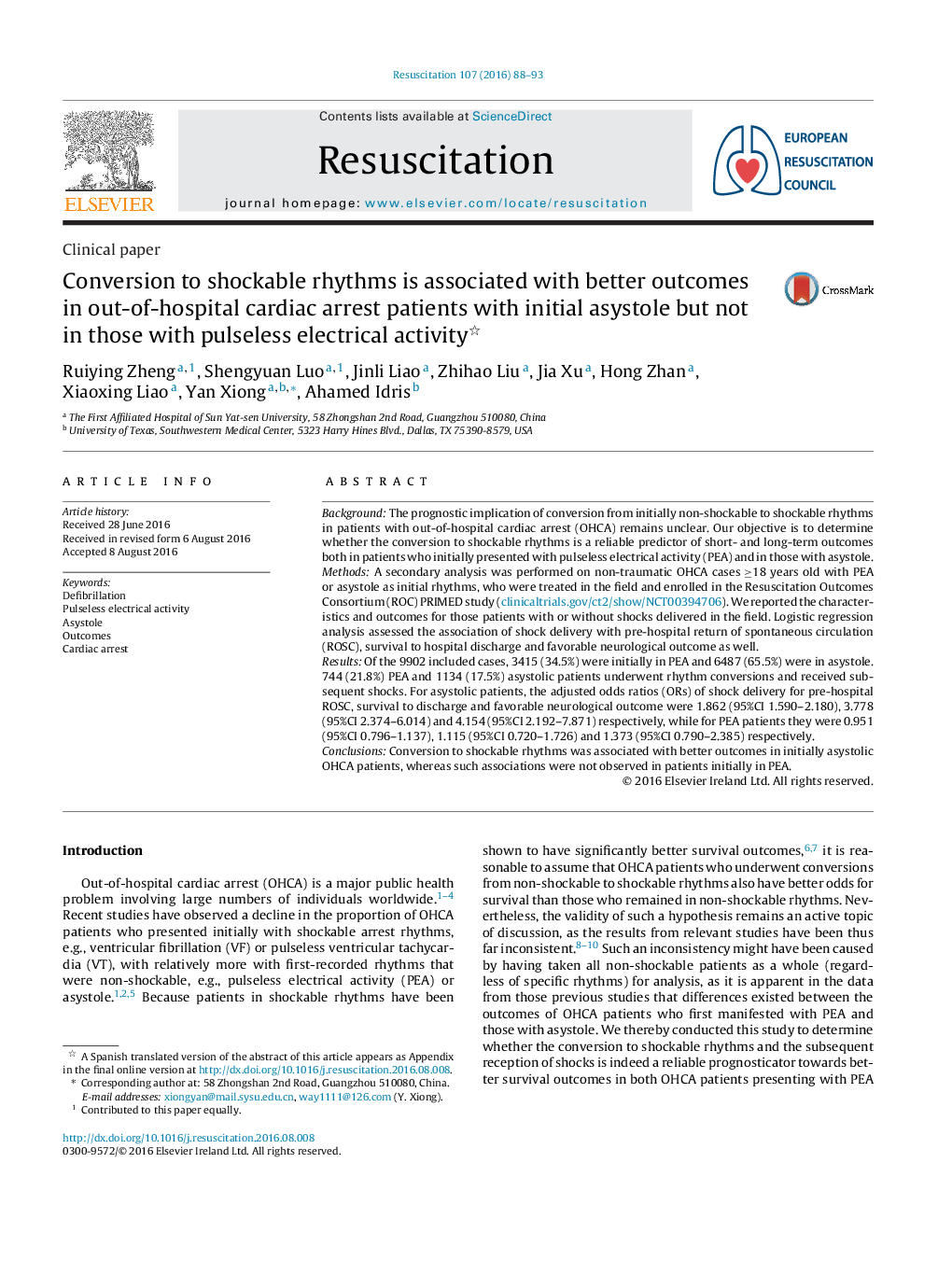| Article ID | Journal | Published Year | Pages | File Type |
|---|---|---|---|---|
| 3007637 | Resuscitation | 2016 | 6 Pages |
BackgroundThe prognostic implication of conversion from initially non-shockable to shockable rhythms in patients with out-of-hospital cardiac arrest (OHCA) remains unclear. Our objective is to determine whether the conversion to shockable rhythms is a reliable predictor of short- and long-term outcomes both in patients who initially presented with pulseless electrical activity (PEA) and in those with asystole.MethodsA secondary analysis was performed on non-traumatic OHCA cases ≥18 years old with PEA or asystole as initial rhythms, who were treated in the field and enrolled in the Resuscitation Outcomes Consortium (ROC) PRIMED study (clinicaltrials.gov/ct2/show/NCT00394706). We reported the characteristics and outcomes for those patients with or without shocks delivered in the field. Logistic regression analysis assessed the association of shock delivery with pre-hospital return of spontaneous circulation (ROSC), survival to hospital discharge and favorable neurological outcome as well.ResultsOf the 9902 included cases, 3415 (34.5%) were initially in PEA and 6487 (65.5%) were in asystole. 744 (21.8%) PEA and 1134 (17.5%) asystolic patients underwent rhythm conversions and received subsequent shocks. For asystolic patients, the adjusted odds ratios (ORs) of shock delivery for pre-hospital ROSC, survival to discharge and favorable neurological outcome were 1.862 (95%CI 1.590–2.180), 3.778 (95%CI 2.374–6.014) and 4.154 (95%CI 2.192–7.871) respectively, while for PEA patients they were 0.951 (95%CI 0.796–1.137), 1.115 (95%CI 0.720–1.726) and 1.373 (95%CI 0.790–2.385) respectively.ConclusionsConversion to shockable rhythms was associated with better outcomes in initially asystolic OHCA patients, whereas such associations were not observed in patients initially in PEA.
